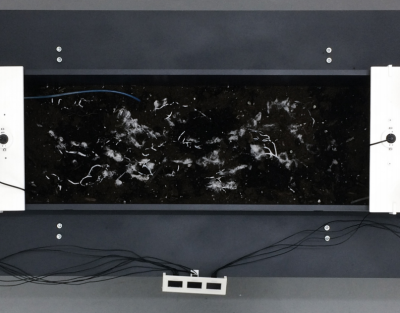Art projects can fundamentally be anything you like, as long as you say they’re art at the end of it all. They don’t always work, or work well, but they often explore new ideas. Often, artists working on installations fall back on similar tools and techniques used by the maker community. [Julian] is no exception, and his Biotic Explorers work has many touchstones that will be familiar to the Hackaday set.

The Biotic Explorers Research Group is a broad art project, involving the creation of a fictitious scientific association. [Julian] created imaginary scientists, reports, and research to flesh out this world. The project culminates in the development of a prototype communications system, which uses pH sensors at either end of a fungal network in soil to send messages.
Liquids are applied to change the pH of the system, which can be picked up at the other end of the soil bed. The pH levels are read as digital signals, with pH levels either side of neutral reading as high and low bits. pH sensors can be expensive, so [Julian] chose the cheapest available, and tapped into their LCD display lines to read their output into an microcontroller. The system displays data using commonly available OLED displays, and hobby servo motors are used to control the dispensing of liquid.
Due to time constraints, [Julian] was unable to get the system fully functional. Sending data as pH levels through fungus proved unreliable and slow, but we suspect with further development, the system could be improved. Regardless, the project serves as an excellent example of the work that goes into a functional art installation. The thesis sheds further detail on the development of the project.
We’re no strangers to an art installation here – whether it’s Markov chains or glowing balloons.
















This is great! I love the project and the whole idea of the fictitious association.
Why am I thinking about adding tardigrades now?
:-D
I somehow seem to remember an initiative somewhere some time where they tried using fungus behaviour and growth as a processor somehow…
Someone used fungus to generate an optimum route for (iirc) the london underground. Basing each station as a high nutrient zone with only basic nutrients in between.
Wasn’t that slime mould rather than fungus?
Yes. Though moulds are a type of fungus. And it turns out it was the Tokyo metro.
Slime molds are no longer categorized as fungi. https://en.wikipedia.org/wiki/Slime_mold
I thought it was “science” or “project” if it worked, and “art” if it didn’t produce the results you wanted :)